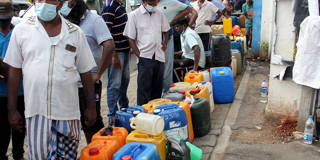While debt has risen across advanced and developing economies alike, the problem is most acute in low- and middle-income countries where debts were already too high before the COVID-19 pandemic. Worse, offering relief to these societies has become harder than ever.
WASHINGTON, DC – Recent headlines seem to augur a global debt crisis. The United States is teetering on the precipice of a self-inflicted default. Egypt, Ghana, Pakistan, and many other countries are in grave financial difficulties. Italy and Japan’s debt burdens have grown heavier. And the Chinese are delaying or hampering multilateral efforts to restructure low- and middle-income countries’ debt. The International Monetary Fund counts 41 countries as being heavily indebted, and that does not include middle-income countries such as Argentina, Pakistan, and Sri Lanka.
The concerns these stories have fueled are real, but there are fundamental differences between them. The US has the capacity to service its debts, and it has been a reliable borrower for many years. Its problem is political. By contrast, the question for poorer countries is whether, or how much, they can repay. Many heavily indebted low-income countries have debt levels that are already unsustainable or will be soon. Some have missed payments or announced that they will have to suspend debt service. Private lenders have responded by refusing to lend more.
But this cohort of indebted countries can be broken down further into two groups. Some countries were in relatively satisfactory positions until COVID-19 forced them to borrow more to finance pandemic-related expenditures. International financial institutions have created special facilities to help these countries secure rapid additional financing, and to sustain normal financing as their economies recover.

WASHINGTON, DC – Recent headlines seem to augur a global debt crisis. The United States is teetering on the precipice of a self-inflicted default. Egypt, Ghana, Pakistan, and many other countries are in grave financial difficulties. Italy and Japan’s debt burdens have grown heavier. And the Chinese are delaying or hampering multilateral efforts to restructure low- and middle-income countries’ debt. The International Monetary Fund counts 41 countries as being heavily indebted, and that does not include middle-income countries such as Argentina, Pakistan, and Sri Lanka.
The concerns these stories have fueled are real, but there are fundamental differences between them. The US has the capacity to service its debts, and it has been a reliable borrower for many years. Its problem is political. By contrast, the question for poorer countries is whether, or how much, they can repay. Many heavily indebted low-income countries have debt levels that are already unsustainable or will be soon. Some have missed payments or announced that they will have to suspend debt service. Private lenders have responded by refusing to lend more.
But this cohort of indebted countries can be broken down further into two groups. Some countries were in relatively satisfactory positions until COVID-19 forced them to borrow more to finance pandemic-related expenditures. International financial institutions have created special facilities to help these countries secure rapid additional financing, and to sustain normal financing as their economies recover.